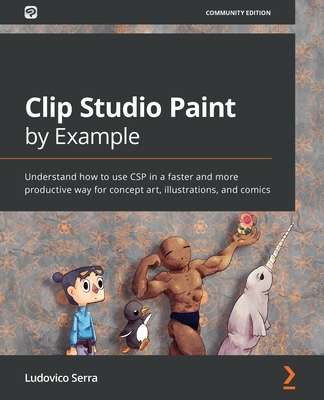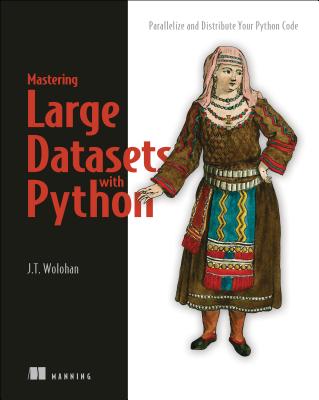Storyboards: Motion in Art, 3/e (Paperback)
暫譯: 故事板:藝術中的動態,第3版(平裝本)
Mark A. Simon
- 出版商: Focal Press
- 出版日期: 2006-10-01
- 售價: $2,360
- 貴賓價: 9.5 折 $2,242
- 語言: 英文
- 頁數: 448
- 裝訂: Paperback
- ISBN: 0240808053
- ISBN-13: 9780240808055
海外代購書籍(需單獨結帳)
買這商品的人也買了...
-
 Windows CE.NET 程式設計 (Programming Microsoft Windows CE .Net, 3/e)
Windows CE.NET 程式設計 (Programming Microsoft Windows CE .Net, 3/e)$890$703 -
 深入淺出設計模式 (Head First Design Patterns)
深入淺出設計模式 (Head First Design Patterns)$880$695 -
 SQL 語法範例辭典
SQL 語法範例辭典$550$435 -
 Linux 驅動程式, 3/e (Linux Device Drivers, 3/e)
Linux 驅動程式, 3/e (Linux Device Drivers, 3/e)$980$774 -
 超圖解 Excel VBA 基礎講座
超圖解 Excel VBA 基礎講座$420$332 -
 Linux 核心詳解, 3/e (Understanding the Linux Kernel, 3/e)
Linux 核心詳解, 3/e (Understanding the Linux Kernel, 3/e)$1,200$948 -
 輕鬆打造我的網站─XOOPS2 深入使用手冊
輕鬆打造我的網站─XOOPS2 深入使用手冊$580$493 -
 深入淺出物件導向分析與設計 (Head First Object-Oriented Analysis and Design)
深入淺出物件導向分析與設計 (Head First Object-Oriented Analysis and Design)$880$695 -
 Pragmatic Software Testing: Becoming an Effective and Efficient Test Professional (Paperback)
Pragmatic Software Testing: Becoming an Effective and Efficient Test Professional (Paperback)$2,000$1,900 -
 $990CCNP ONT Official Exam Certification Guide (Hardcover)
$990CCNP ONT Official Exam Certification Guide (Hardcover) -
 C++ Primer, 4/e (中文版)
C++ Primer, 4/e (中文版)$990$891 -
 深入淺出 C# (Head First C#)
深入淺出 C# (Head First C#)$980$774 -
 網頁設計 愛上 jQuery
網頁設計 愛上 jQuery$550$468 -
 MIS 網路管理的工具箱
MIS 網路管理的工具箱$450$351 -
 Windows Server 2008 系統建置與管理
Windows Server 2008 系統建置與管理$690$587 -
 程式之美-微軟技術面試心得
程式之美-微軟技術面試心得$490$417 -
 Learning jQuery 中文版 (Learning jQuery: Better Interaction Design and Web Development with Simple JavaScript Techniques)
Learning jQuery 中文版 (Learning jQuery: Better Interaction Design and Web Development with Simple JavaScript Techniques)$480$408 -
 Short Coding 寫出簡潔好程式-短碼達人的心得技法
Short Coding 寫出簡潔好程式-短碼達人的心得技法$480$374 -
 新一代互動體驗 Flex + AIR 程式開發
新一代互動體驗 Flex + AIR 程式開發$680$578 -
 Linux 程式設計教學手冊 (Beginning Linux Programming, 4/e)
Linux 程式設計教學手冊 (Beginning Linux Programming, 4/e)$780$616 -
 Linux 裝置驅動程式之開發詳解
Linux 裝置驅動程式之開發詳解$780$616 -
 Python 學習手冊 (Learning Python, 3/e)
Python 學習手冊 (Learning Python, 3/e)$880$695 -
 作業管理精簡版 (Stevenson/ Operations Management, 9/e)
作業管理精簡版 (Stevenson/ Operations Management, 9/e)$660$627 -
 深入淺出 PMP (Head First PMP, 2/e)
深入淺出 PMP (Head First PMP, 2/e)$980$774 -
 Android 核心剖析
Android 核心剖析$650$514
相關主題
商品描述
Description
Among the most useful tools in the production of any TV show or film is the storyboard, which is the visual blueprint of a project before it is shot. The director’s vision is illustrated in the manner of a comic strip and handed on to the crew for purposes of budgeting, design, and communication.
Storyboards: Motion in Art 3/e is an in depth look at the production and business of storyboards. Using exercises, real-life examples of working in the entertainment industry, interviews with people in the industry, and sample storyboard drawing, this book will teach you how to :
Develop and Improve your boards
Work with directors
Develop your resume and your portfolio
Market your talent
Create and improve a storyboard using computers
Packed full of practical industry information and examples, this book will help the reader improve their skills to either land their first assignment or advance their career.
Table of Contents
ACKNOWLEDGMENTS
INTRODUCTION
Chapter 1 - What Are Storyboards
PART ONE - GETTING STARTED
Chapter 2 - Getting Started
Chapter 3 - What It Takes to be a Storyboard Artist
Chapter 4 - Education
Chapter 5 - Materials
Chapter 6 - Benefits to Production
PART TWO - THE ART OF STORYBOARDING
Chapter 7 – Drawing Quick Thumbnail Storyboards
Chapter 8 – Sketching Perspective
Chapter 9 –Final Storyboard Art and Clean Up
Chapter 10 – Storyboard Coloring
Chapter 11 - Presentation Boards versus Production Boards
Chapter 12 - Live-Action Boards
Chapter 13 - Animation Boards
Chapter 14 – Gaming and Multi-Media Boards
Chapter 15 – Live Event and Theme Park Boards
Chapter 16 - Laser Show Boards
Chapter 17 - Comps
Chapter 18 - Animatics
Chapter 19 – Previz
Chapter 20 - Styles
Chapter 21 - Directing Shots
Chapter 22 - Working With Directors
Chapter 23 – Screen Direction
Chapter 24 – Staging & Composition
Chapter 25 - References and Research
Chapter 26 - Illustrated Camera Techniques
Chapter 27 - Numbering
Chapter 28 - Contrast and Mood
Chapter 29 - Special Effects
Chapter 30 - Conceptual Illustration
Chapter 31 - Computers and Software
Chapter 32 - Tricks of the Trade
Chapter 33 - Presentation and Delivery
PART THREE - THE BUSINESS OF STORYBOARDING
Chapter 34 - Resumes
Chapter 35 - Portfolios
Chapter 36 - Education and Skills
Chapter 37 - How I Got Started
Chapter 38 - Who Hires Storyboard Artists
Chapter 39 - Finding A Job
Chapter 40 – Prepping For Each Job
Chapter 41 - How Productions Work
Chapter 42 - What Producers Look For
Chapter 43 - Pricing
Chapter 44 - Estimating
Chapter 45 - Billing Practices
Chapter 46 - Licensing
Chapter 47 - Trade Practices
Chapter 48 - Format
Chapter 49 - Agents and Artists Reps
Chapter 50 - Unions
Chapter 51 - Business Aspects
PART FOUR - INTERVIEWS
Chapter 52 - Alex Saviuk
Storyboard/Comic Book Artist
Chapter 53 – Mark Moore
ILM Vice President and Senior Executive in Charge of Production and previous Storyboard Artist
Chapter 54 – Sean Cushing
Chapter 56 – Tim Burgard
Chapter 59 – Lyle Grant
Chapter 60 – Jeff Dates
PART 5 – EXERCISES
Chapter 61 – Exercise 1
Chapter 62 - Exercise 2
Chapter 63 – Exercise 3
Chapter 64 – Exercise 4
Chapter 65 – Exercise 5
Chapter 66 – Exercise 6
Chapter 67 – Exercise 7
PART 6 – EXPERIMENT
Chapter 68 - Experiment
PART 7 – APPENDICES
Forms
Reference Books
AMAKING OF@ BOOKS
AART OF@ BOOKS
SPECIAL EFFECTS
THE SCREENPLAY
ANIMATION
ONLINE REFERENCES
REFERENCE BOOKS
STORYBOARDING/DIRECTING
MARKETING
ARCHITECTURE AND INTERIORS
PERIODICALS
RESOURCE GUIDES
PART 8 – STORYBOARD SAMPLES GLOSSARY
商品描述(中文翻譯)
**描述**
在任何電視節目或電影的製作中,最有用的工具之一就是故事板,它是項目拍攝前的視覺藍圖。導演的視野以漫畫條的形式呈現,並交給工作團隊以便於預算、設計和溝通。
《故事板:藝術中的運動》第三版深入探討了故事板的製作和商業。通過練習、娛樂行業的實際案例、與行業內人士的訪談以及示範故事板繪製,本書將教你如何:
- 發展和改善你的故事板
- 與導演合作
- 發展你的履歷和作品集
- 推銷你的才能
- 使用電腦創建和改善故事板
本書充滿了實用的行業資訊和範例,將幫助讀者提升技能,以便獲得第一份任務或推進他們的職業生涯。
**目錄**
致謝
導言
第一章 - 什麼是故事板
第一部分 - 開始
第二章 - 開始
第三章 - 成為故事板藝術家的必要條件
第四章 - 教育
第五章 - 材料
第六章 - 對製作的好處
第二部分 - 故事板的藝術
第七章 - 繪製快速縮略故事板
第八章 - 草圖透視
第九章 - 最終故事板藝術及清理
第十章 - 故事板上色
第十一章 - 簡報板與製作板
第十二章 - 實景板
第十三章 - 動畫板
第十四章 - 遊戲和多媒體板
第十五章 - 現場活動和主題公園板
第十六章 - 激光秀板
第十七章 - 合成
第十八章 - 動畫
第十九章 - 預視
第二十章 - 風格
第二十一章 - 導演鏡頭
第二十二章 - 與導演合作
第二十三章 - 螢幕方向
第二十四章 - 場景佈置與構圖
第二十五章 - 參考資料與研究
第二十六章 - 插圖攝影技巧
第二十七章 - 編號
第二十八章 - 對比與情緒
第二十九章 - 特效
第三十章 - 概念插圖
第三十一章 - 電腦與軟體
第三十二章 - 行業技巧
第三十三章 - 簡報與交付
第三部分 - 故事板的商業
第三十四章 - 履歷
第三十五章 - 作品集
第三十六章 - 教育與技能
第三十七章 - 我是如何開始的
第三十八章 - 誰雇用故事板藝術家
第三十九章 - 找工作
第四十章 - 為每個工作做準備
第四十一章 - 製作如何運作
第四十二章 - 製片人尋找什麼
第四十三章 - 價格
第四十四章 - 估算
第四十五章 - 開票實務
第四十六章 - 授權
第四十七章 - 行業實務
第四十八章 - 格式
第四十九章 - 代理人與藝術代表
第五十章 - 工會
第五十一章 - 商業方面
第四部分 - 訪談
第五十二章 - Alex Saviuk
故事板/漫畫藝術家
第五十三章 - Mark Moore
ILM 副總裁及製作高級執行官,前故事板藝術家
第五十四章 - Sean Cushing
第五十六章 - Tim Burgard
第五十九章 - Lyle Grant
第六十章 - Jeff Dates
第五部分 - 練習
第六十一章 - 練習 1
第六十二章 - 練習 2
第六十三章 - 練習 3
第六十四章 - 練習 4
第六十五章 - 練習 5
第六十六章 - 練習 6
第六十七章 - 練習 7
第六部分 - 實驗
第六十八章 - 實驗
第七部分 - 附錄
表格
參考書籍
《製作中的書籍》
《藝術中的書籍》
特效
劇本
動畫
線上參考
參考書籍
故事板/導演
行銷
建築與室內設計
期刊
資源指南
第八部分 - 故事板範例
詞彙表























